Main image is 1st August 2024, part of the land I purchased in 2021 when it was rough pasture, as in the distance.
One half of this 3600 m² area, just under an acre, is staying wild. There's also a wet-dry pond with wildflowers around, a smaller pond, a large shed and this 600 m² of intensively, cropped, no dig vegetables. It's the top half of the next photo.
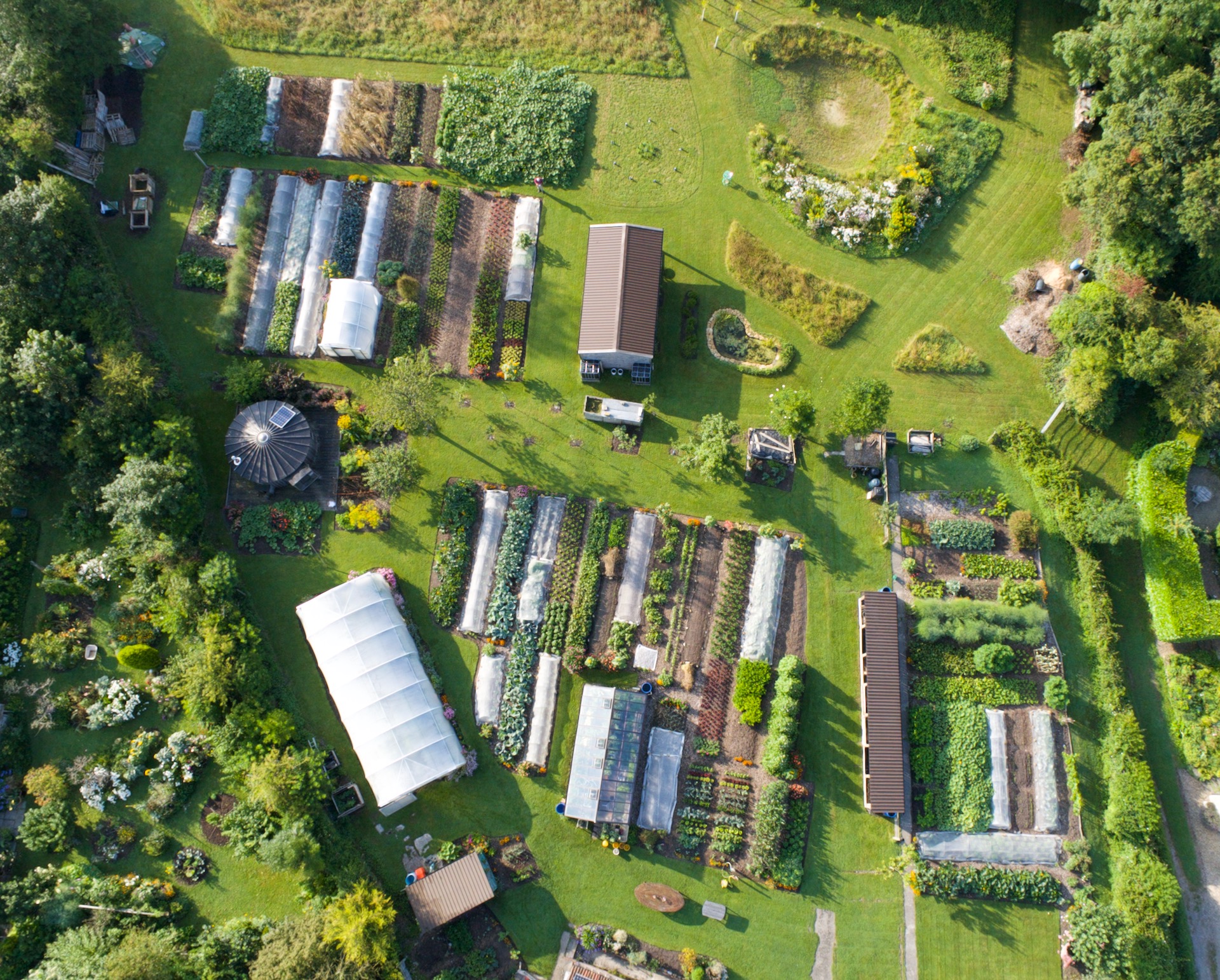
Intensive cropping
I am often asked whether the methods I use can be scaled up, say to 10,000 m², 2.5 acres or more. My answer is that they can be, but it's not economic.
Because this approach is all about growing the maximum amount of high value produce, from as small an area as possible. This is time and resource efficient. To use this non-mechanical approach for growing low value crops such as potatoes, cabbage and onions, would at current prices be loss-making.
No dig is a brilliant time-saver in summer, because there is no need for soil preparation, or adding new compost.
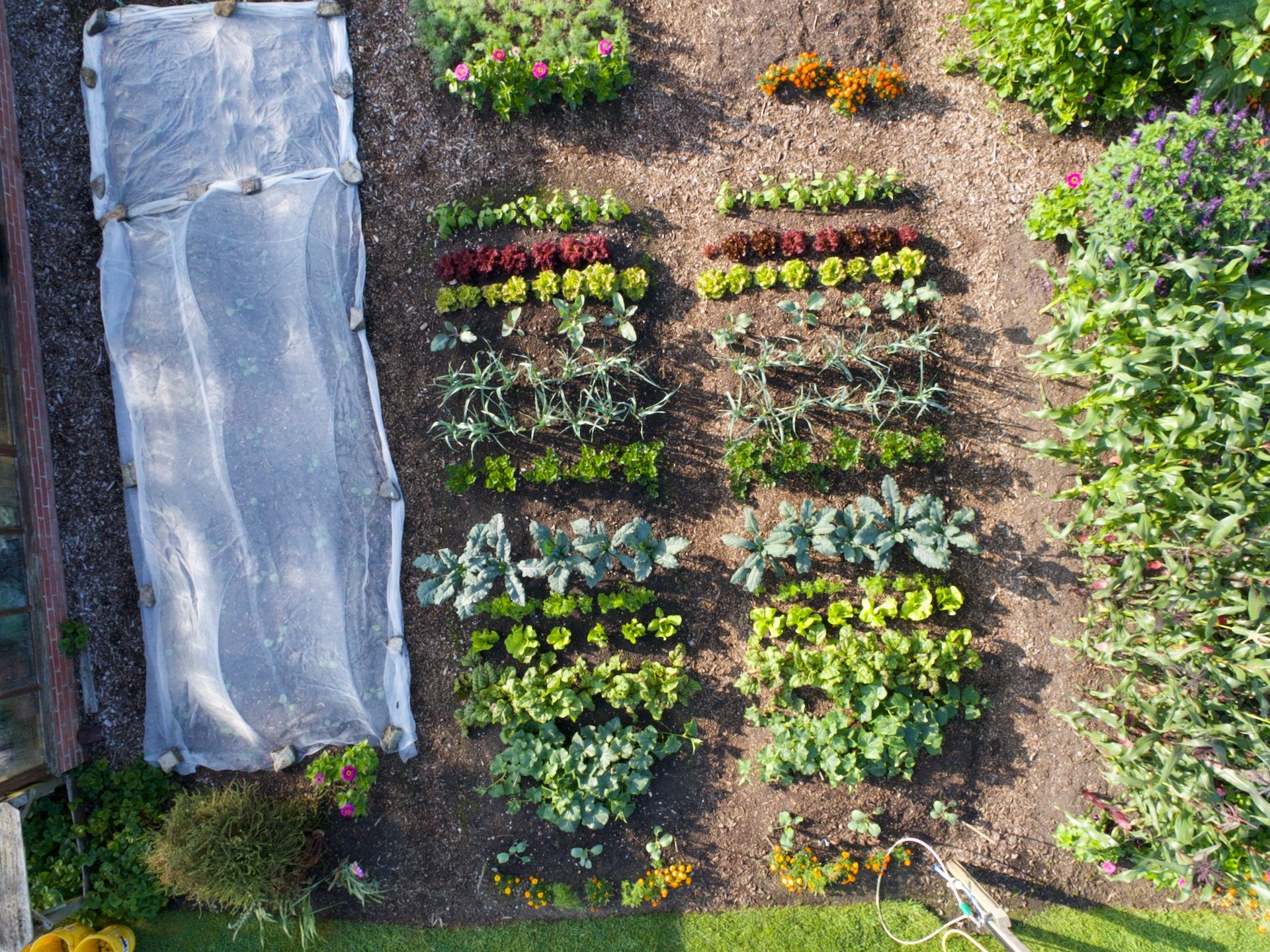
Harvests to end of July are 37.6 kg from the dig bed, 49.1 kg from no dig. Both beds are the same size and are planted the same. Everything in the photo is succession plantings made since June, trial details here.
The bed on left is cabbage under mesh, and on right is sweetcorn.
New sowings and slugs
August in some ways can be a second spring, with lovely new options for sowing.
Under cover
- Spinach is a fantastic sowing for early August, varieties such as Medania, Trombone and Amazon.
- Salad rocket also is right in season to sow now. As with the spinach, it has passed flowering time and should crop for a long period before making flower stems. Plus there should be less flea beetle damage, compared to in spring and summer.
- Mustards, pak choi and any Oriental leaves are good to sow now.
- Chinese cabbage – sow as soon as possible for time to grow a heart before November.
- Chard and kale in early August, for medium-sized leaves through autumn.
- Endives before mid-month.
Outside
Endives, spinach, salad rocket, mustards, radish.
I recommend under cover if possible, for less damage from pests, more reliable germination, and increased growing time. The latter is because your seedlings are growing while other vegetables are finishing, then can be cleared to make space.
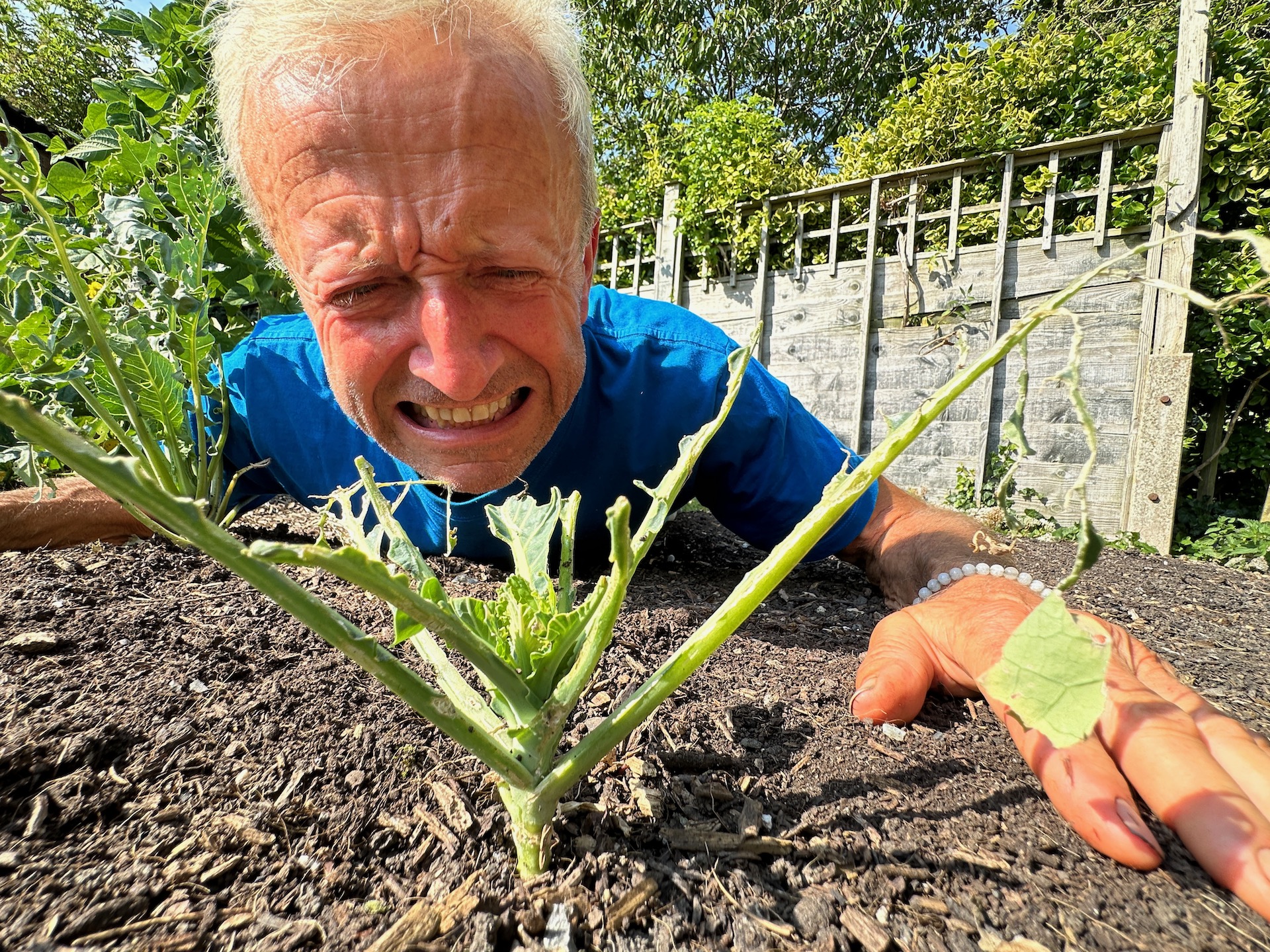
Top jobs
See my August video for suggestions of where to direct your time and energy.
- One important job now is to pinch or cut off the tops of outdoor tomatoes.
- Followed by doing that before mid-August, for under-cover tomatoes.
This prevents new growth, concentrating plant energy into growing and finishing existing fruits, before it's too dark and cold in October. Only two months away!
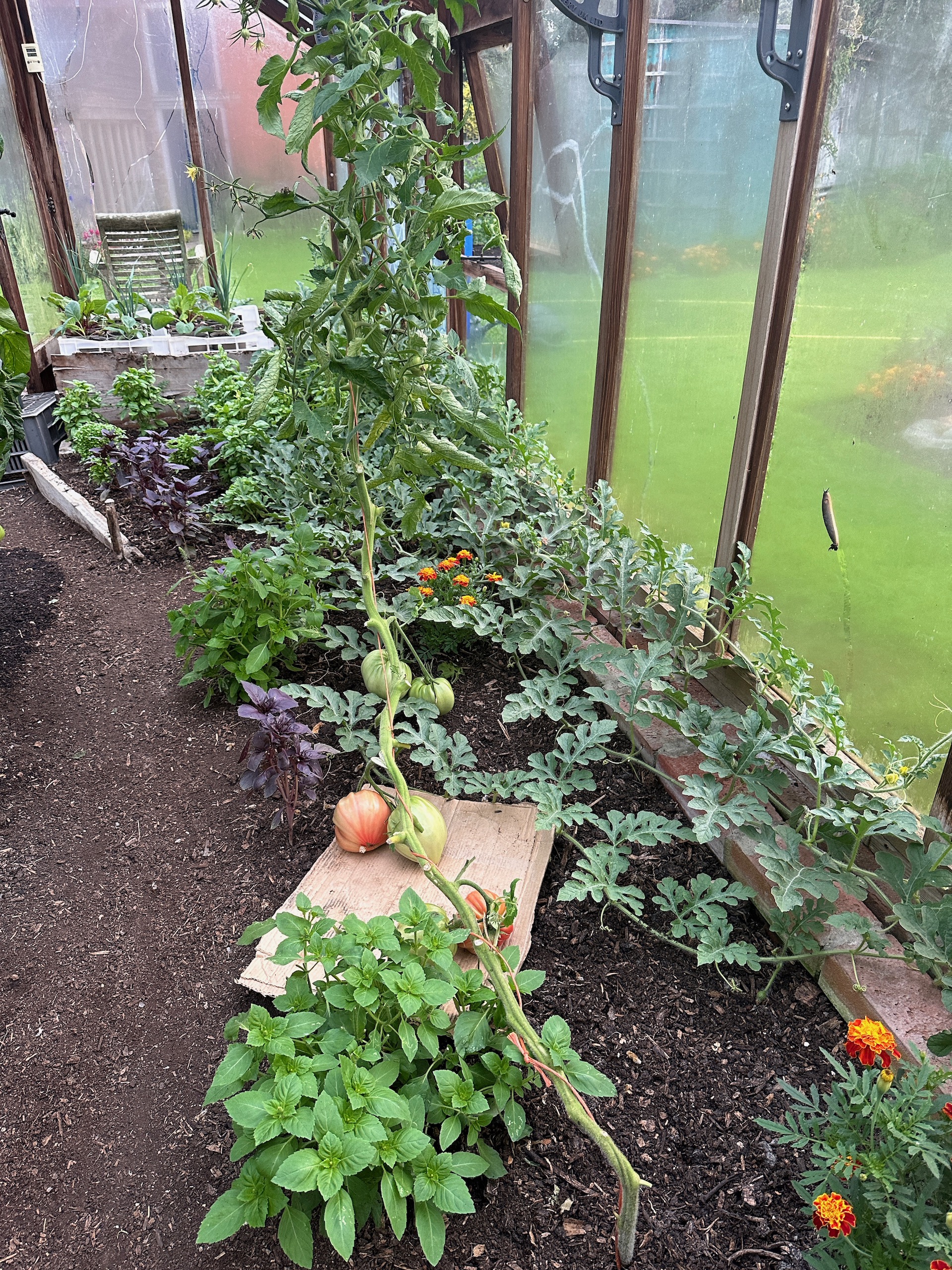
Wilting leaves
For many of us, the level of moisture in the soil is now low after plants have grown large and used quite a lot. At least, growth is helped by no dig, because the capillary network has not been damaged, plus mycelia can pull moisture from soil cavities where roots are too large to enter.
Nonetheless, if you see something happening like in the photo below, either you need to water, or accept that the tree and hedge roots will reduce your harvest. I take the latter approach because I have limited time to water, and it's not economic to water the hedge!
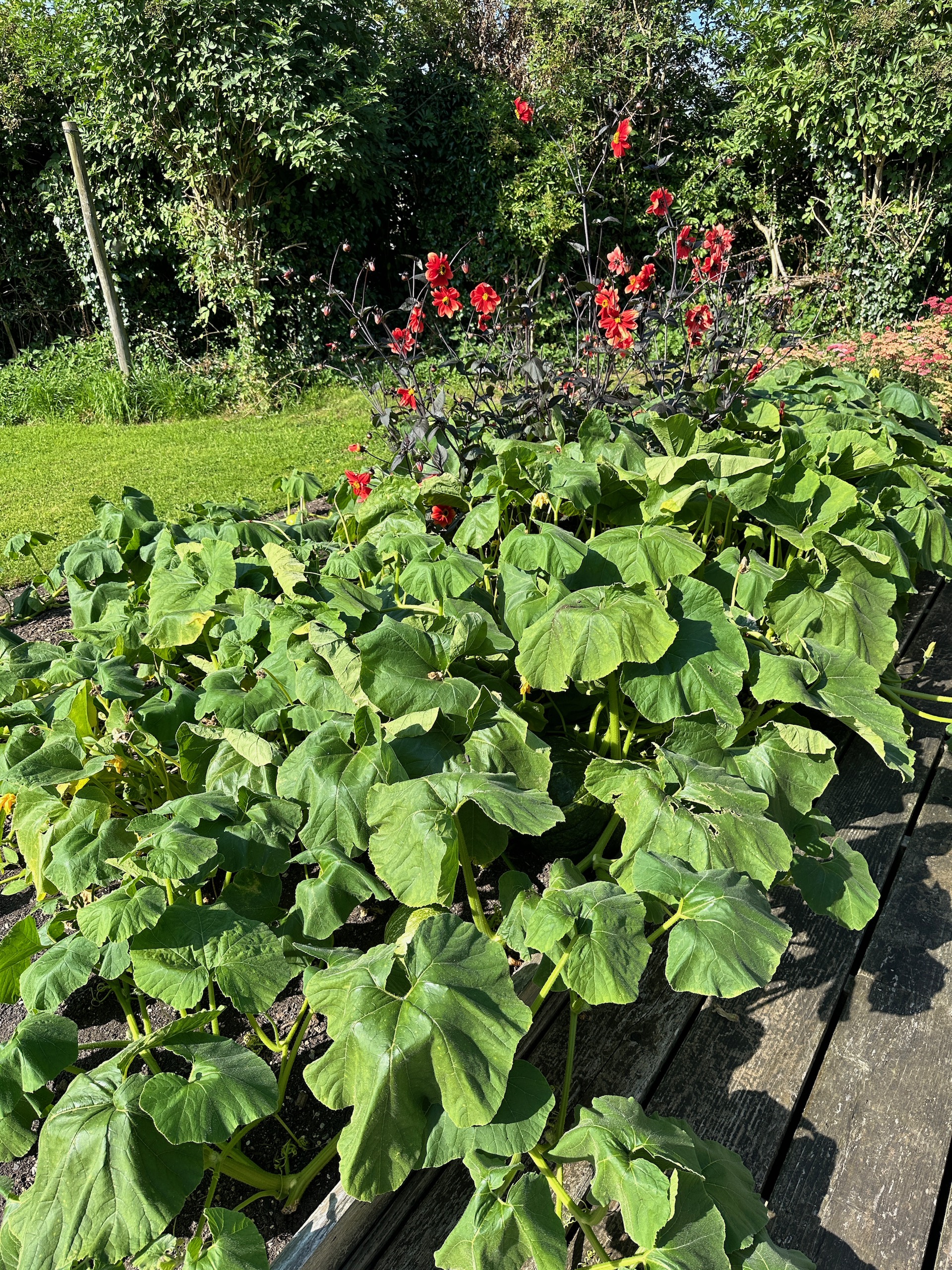
Collecting seeds
For vegetables, this happens in stages. I recently twisted out my one seeding lettuce plant in the polytunnel, and I have hung it in the garage to keep it dry until we have time to extract the seeds.
We rubbed out seeds from 60 mustard plants, which were transplanted in March, kept under fleece for one month and then were open to grow and flower. It's a sadly tiny harvest! Perhaps because until recently, I was seeing hardly any insects.
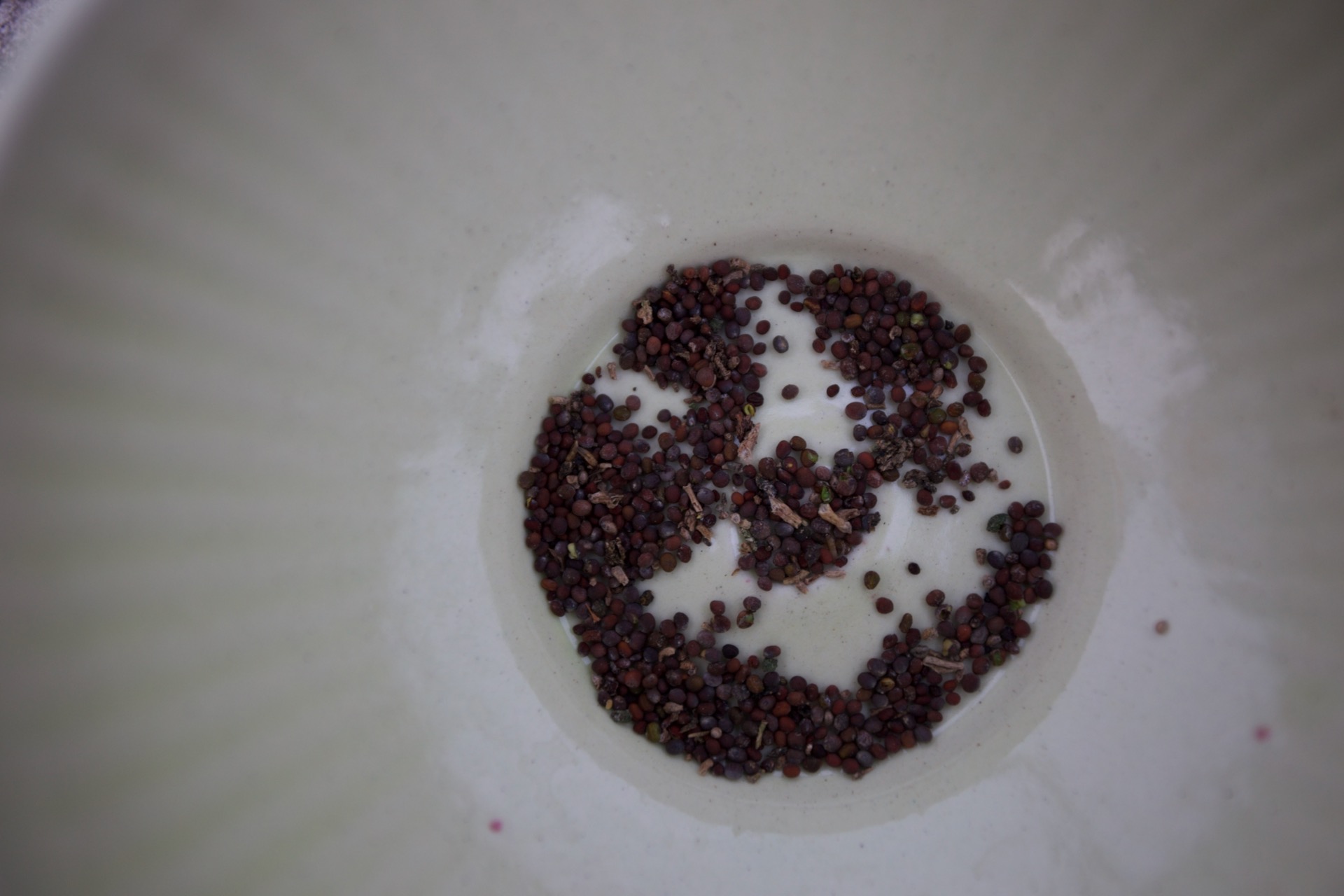
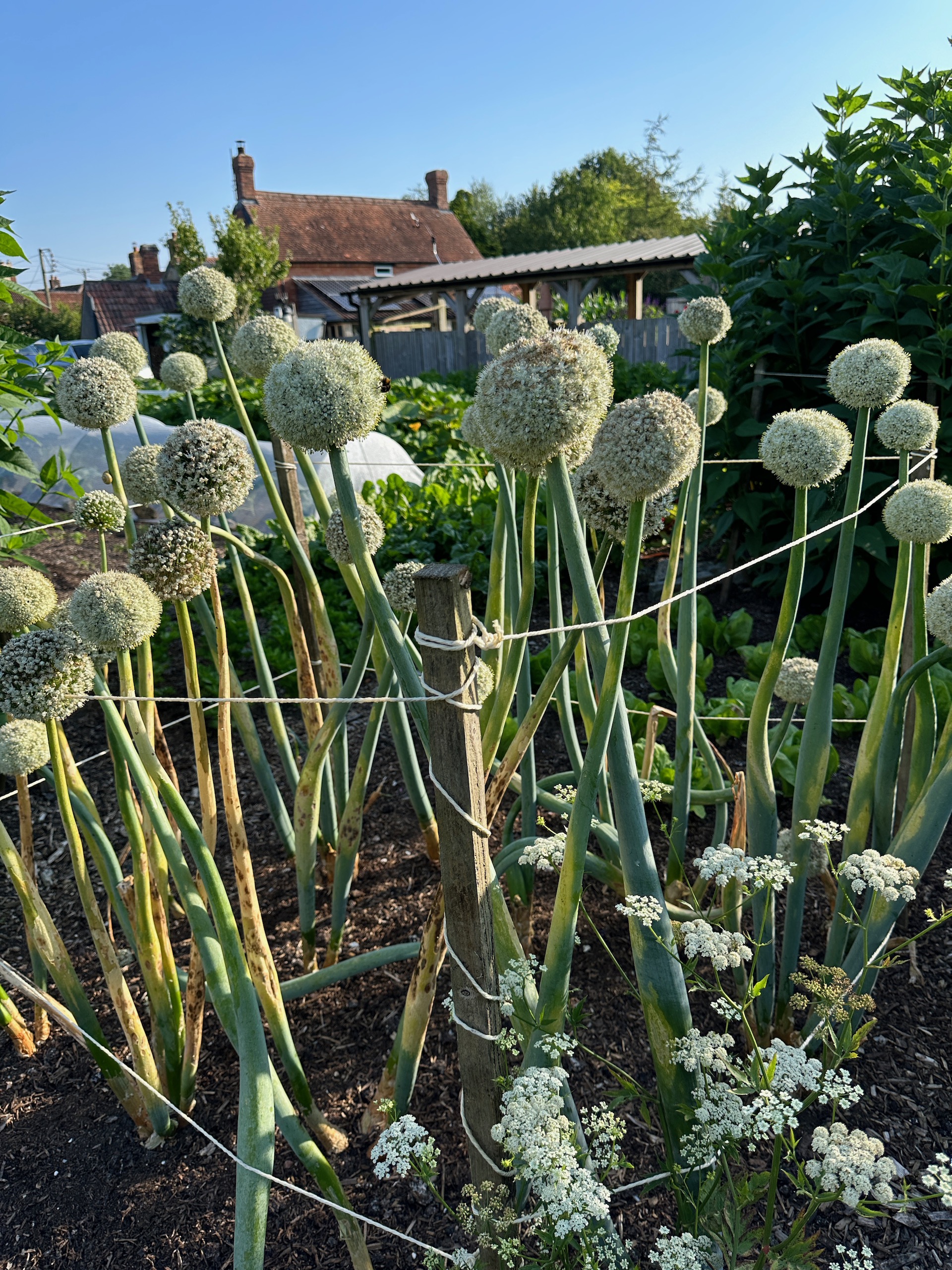
Onion harvests and drying
if you have not yet harvested onions, they are probably ready now, unless for some reason all the stems are still upright. Once you see more than a4 to a third of the stones flopping down, it's good to pull the onions. Then find somewhere undercover to keep them dry. After 10 to 12 days of that, we cut most of the tops off, and they finish drying better like that, as in the photo below
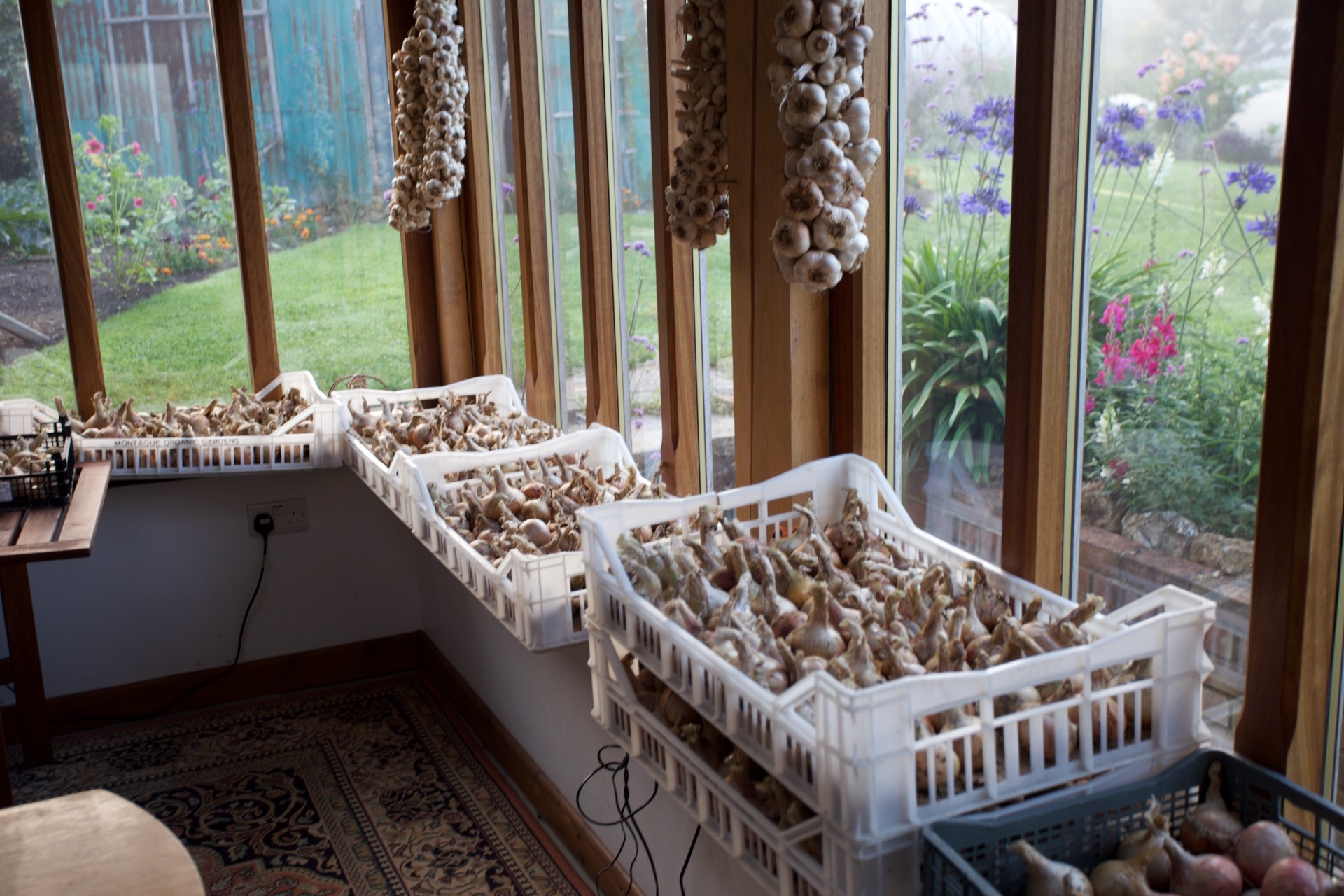
Other harvests
Maincrop potatoes, if not blighted, may want new compost on top to prevent greening.
If blighted, cut tops off immediately, and you can compost them! Then wait a few days so that the blight spores die in the soil, before you harvest potatoes. Don't leave them in the ground for too long in case of slug damage.
Tomatoes
- 1) Pick cherry tomatoes when fully coloured.
- 2) Pick beef tomatoes when you see the first colour, they then finish ripening in your house. This allows the plant more chance to grow extra tomatoes
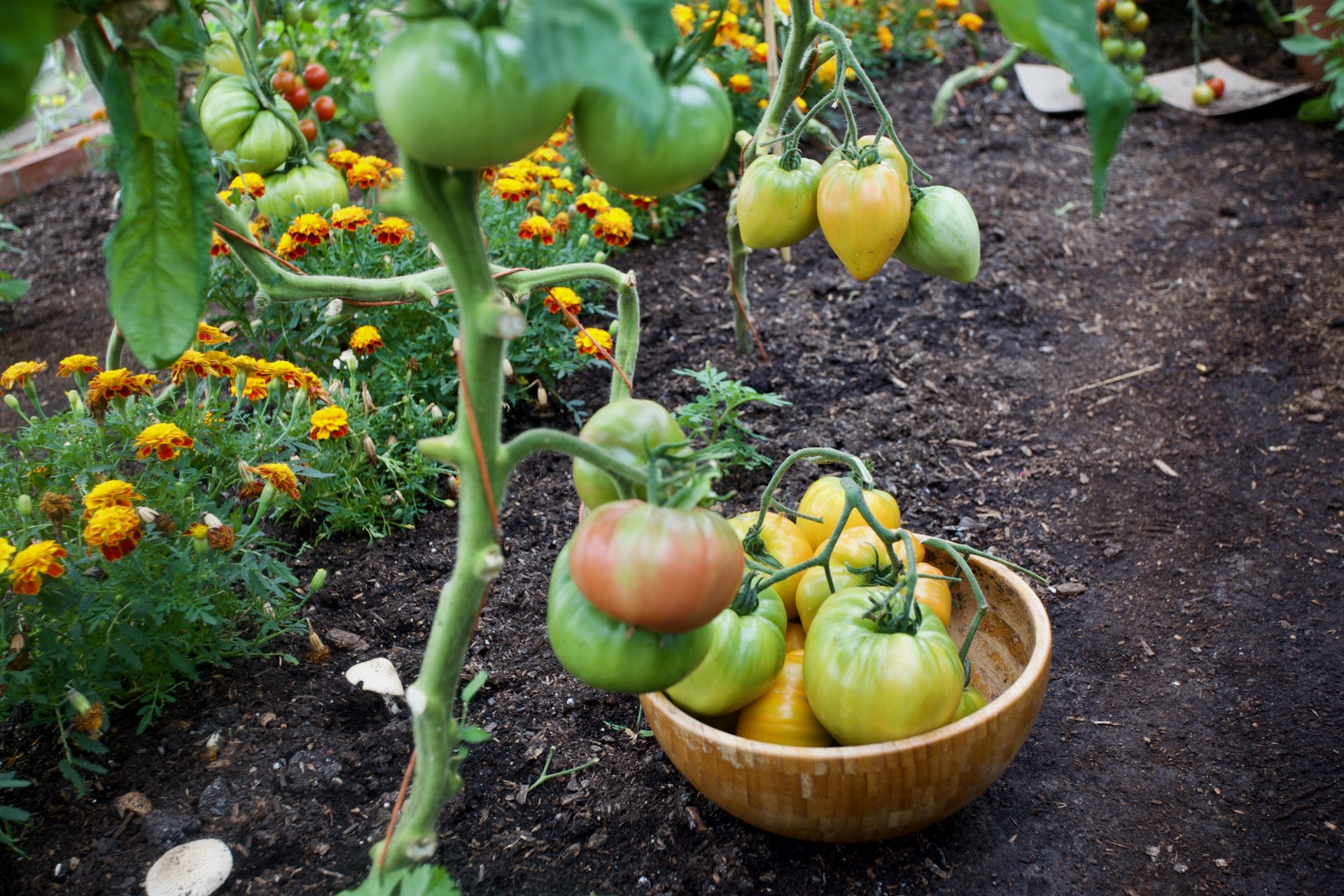
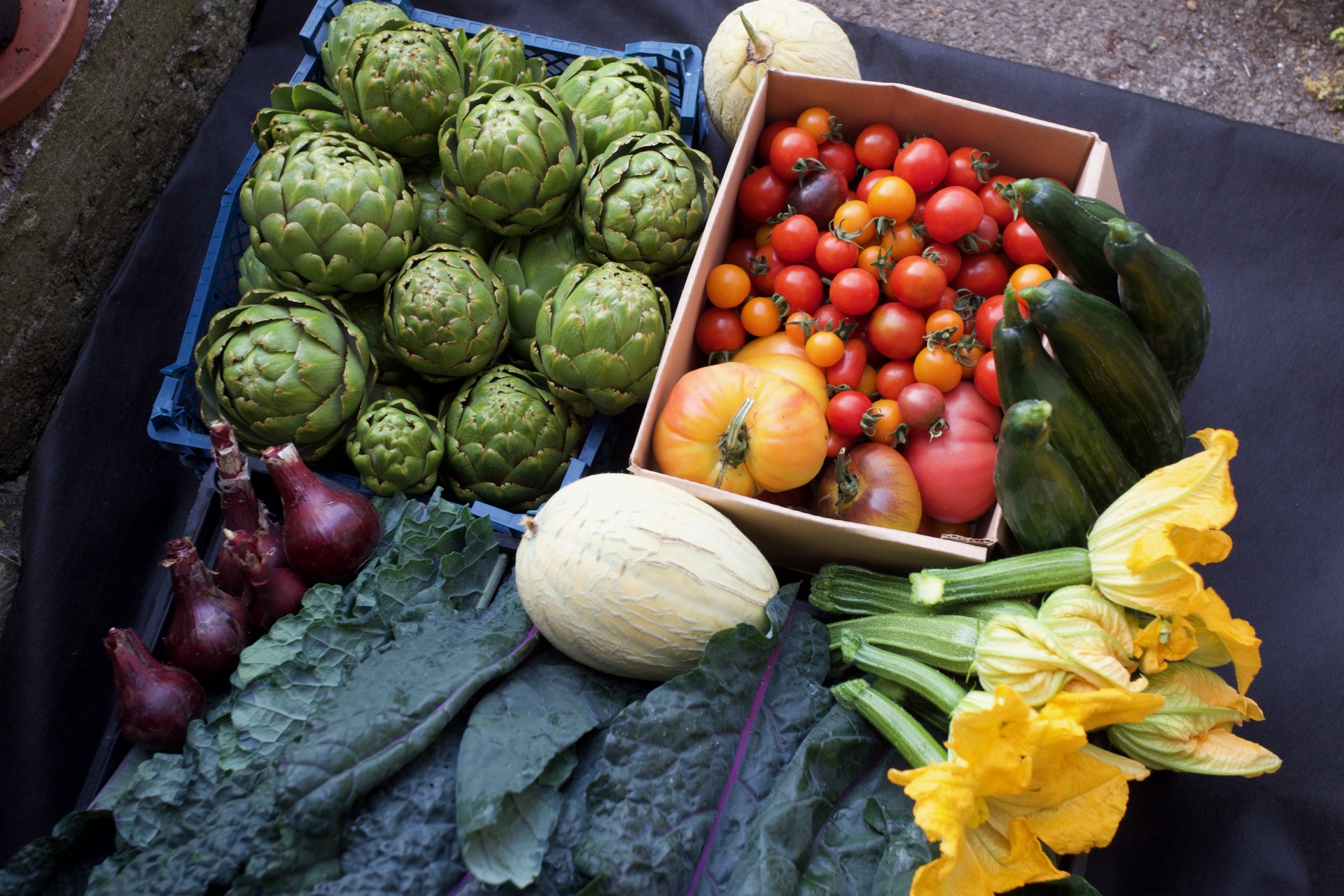









































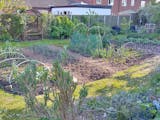
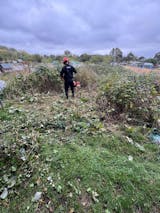
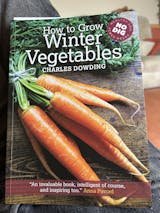
0 comments